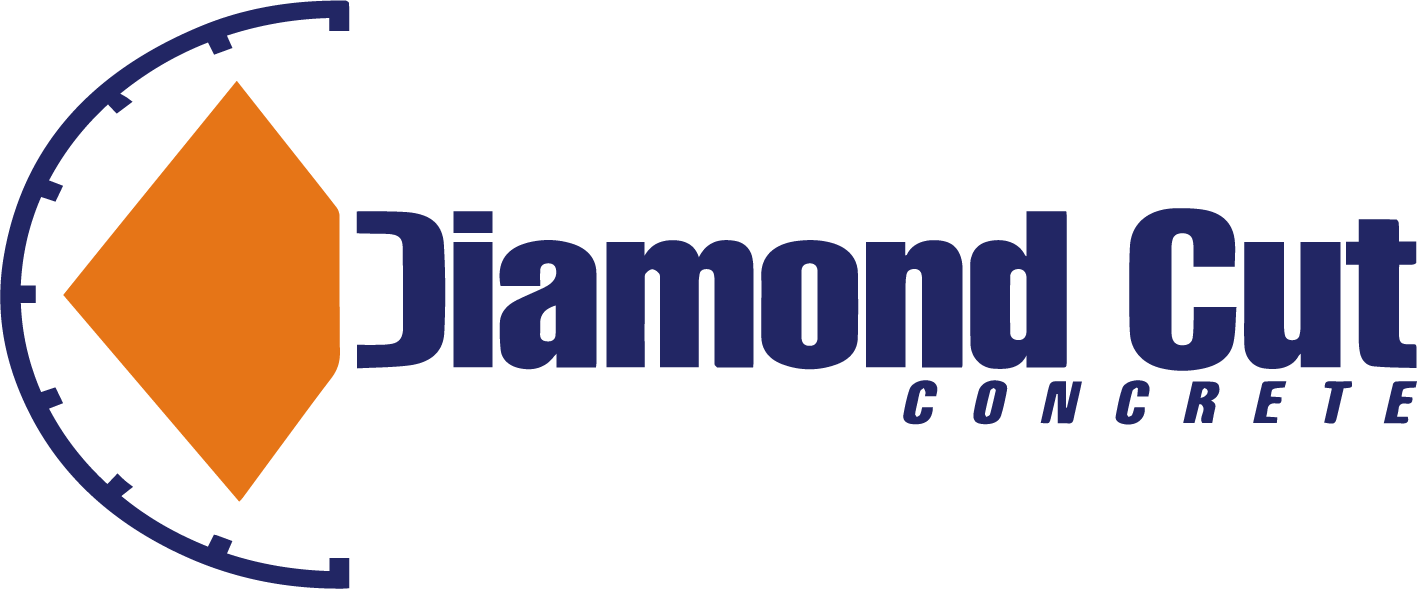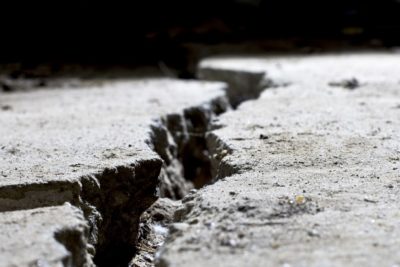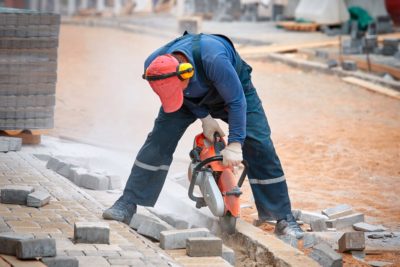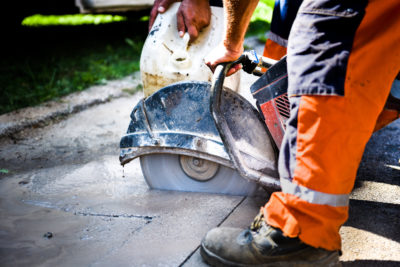If you’re wondering why your concrete cutter has suggested using wet cutting, it’s because they value worksite safety above all. One of the biggest risk factors when dry cutting into concrete, mortar, bricks, pavers, tiles or anything that contains crystalline silica (quartz) is the emission of tiny harmful particles.
What is in concrete dust and why is it harmful?
Crystalline silica is found in common work materials such as sand, stone, concrete, plaster and mortar. Concrete contains a fair amount of silicon and whenever workers cut, grind, saw or core concrete, the dust given off contains very small particles of silica.
When concrete dust containing silica is inhaled, because it’s so fine, it gets lodged deep in the lungs. Prolonged or intense exposure to concrete dust can cause irreversible lung damage, illness or disease including emphysema and chronic silicosis, making it difficult to breathe and reduces quality of life. In some cases even death.
Methods to control concrete dust when cutting, coring or grinding
To be able to continually work with concrete, there are a number of ways to reduce the amount of dust created when sawing, cutting, coring, grinding or drilling concrete, which helps reduce the risk of prolonged or intense exposure.
1. Wet cutting and water suppression
Wet cutting is essential as the name suggests, adding water into the mix to effectively reduce the amount of dust generated by up to 85% as opposed to cutting through dry concrete. The water used in the wet cutting process also helps reduce the temperature of the diamond blade, keeping it cool and extending its lifespan. This also means you are able to make more precise cuts rather than having to wait for the blade to cool down when dry cutting.
Methods of using wet cutting and water suppression
- Water is hosed directly onto the rotating cutting blade while in use
- Continuous water flow is pumped directly onto the cutting area while the saw is in use
- A water mist is sprayed in the air to cause concrete dust to settle quicker
- Water jets used to suppress dust emission — uses pressurised tanks containing a minimum of 8litres of water produces a ratio of ½ a litre of water per minute (recommended standard) rate of release to help counter dust emissions.
It is important to note that with continuous water flows, necessary measures and the right equipment must be used to cope with water containment and the collection of concrete slurry.
2. Dust extraction
Dust extraction systems such as high powered vacuums which use specialist air filters are fitted to a tool to help extract the dust at the point of cutting, sawing or drilling.
It is important to make sure the dust extraction equipment used has been designed for the tool in use to be able to effectively capture all the dust. Pay special attention to the dust collection bags and filters, making sure they are emptied, cleaned and changed regularly to avoid getting clogged or overfilled.
3. Respiratory protective equipment
Respirators provide additional protection from the airborne particles given off when cutting concrete and should be used in conjunction with another method of dust control, either extraction or water suppression.
It is important to ensure the right respirator is used for the job. Worksafe outlines specific requirements here.
Safety is our top priority
As part of our ongoing commitment to upholding a safe worksite, we continually invest in the latest dust control equipment and techniques to effectively minimise and reduce dust exposure on every project.
With an active Concrete Sawing and Drilling Association Australia (CSDAA) membership, we ensure all our operators and staff are dedicated to providing the safest work environment for everyone on site.
We conduct a safety evaluation of the risk of the job with every project before implementing necessary methods of dust control, including wet cutting, respiratory protection and high powered wet vacuums to collect all the slurry. Our qualified and experienced team work to the highest standards of safety to deliver rock-solid results that meet all your project needs. Contact Diamond Cut Concrete today.
We cut straight, we cut safe and we cut on time, that’s our guarantee.



